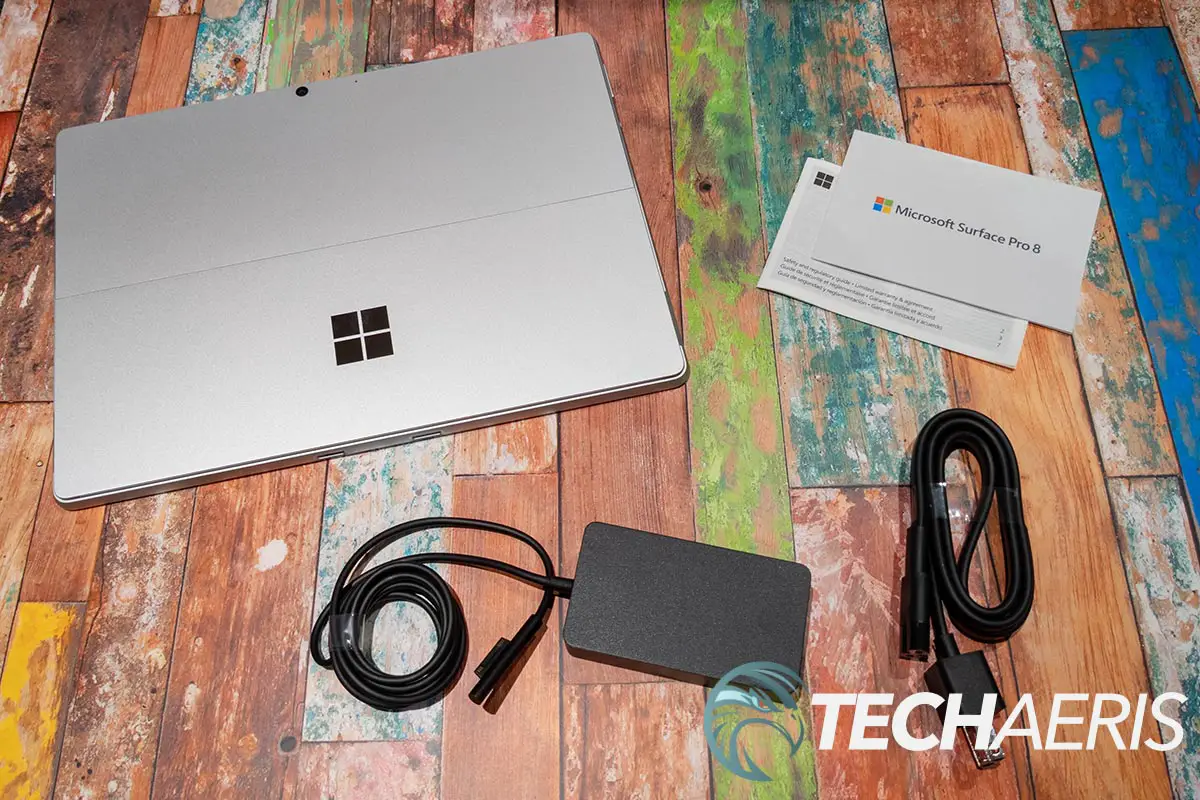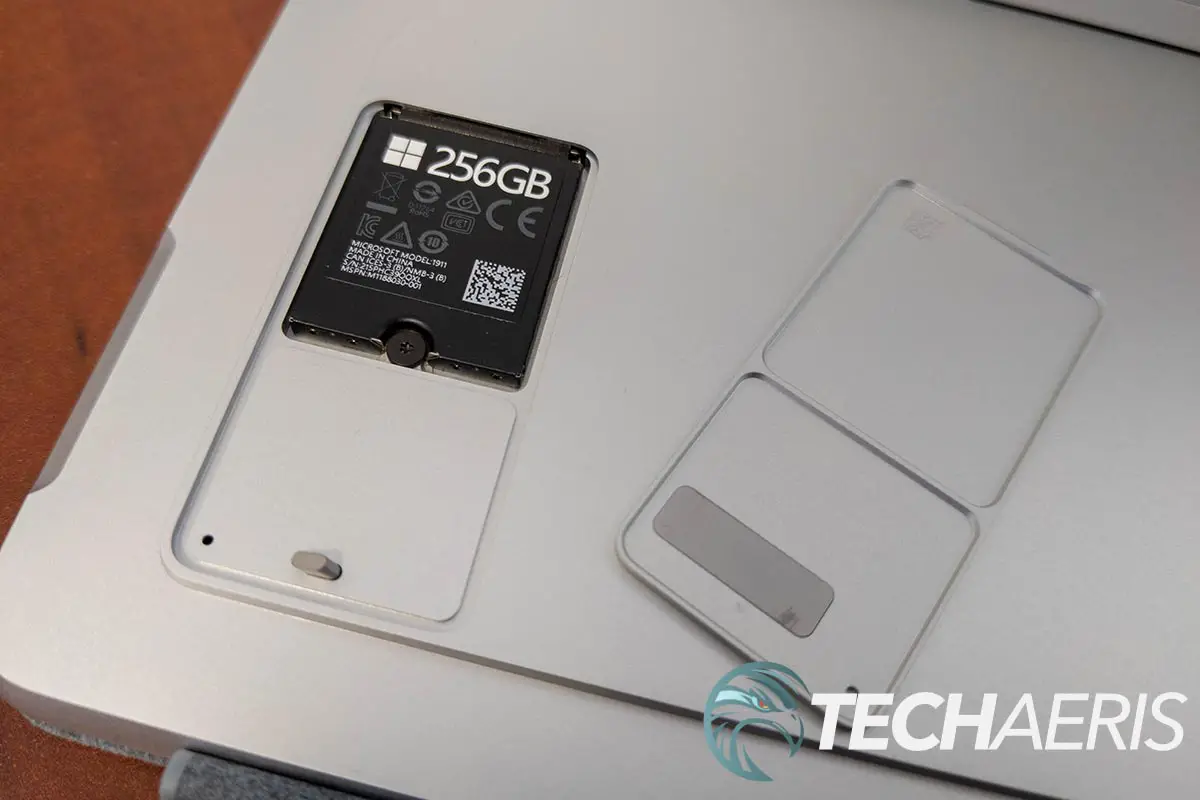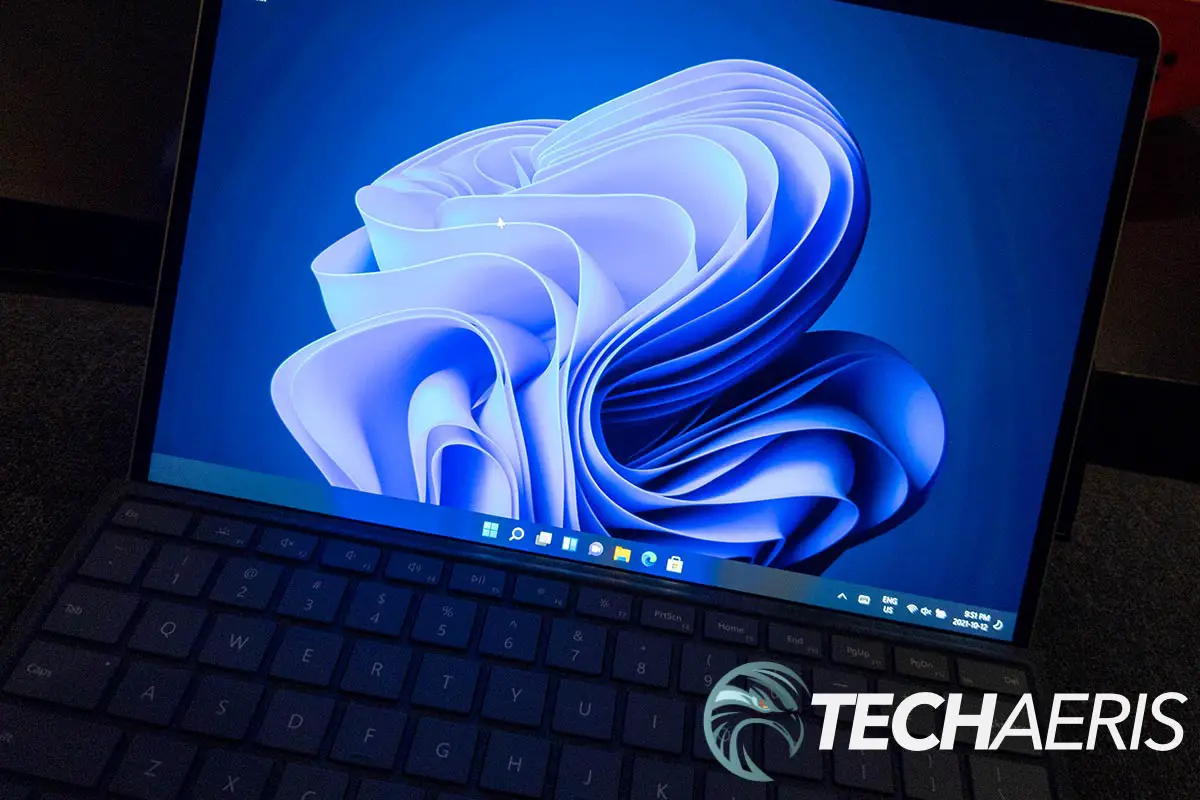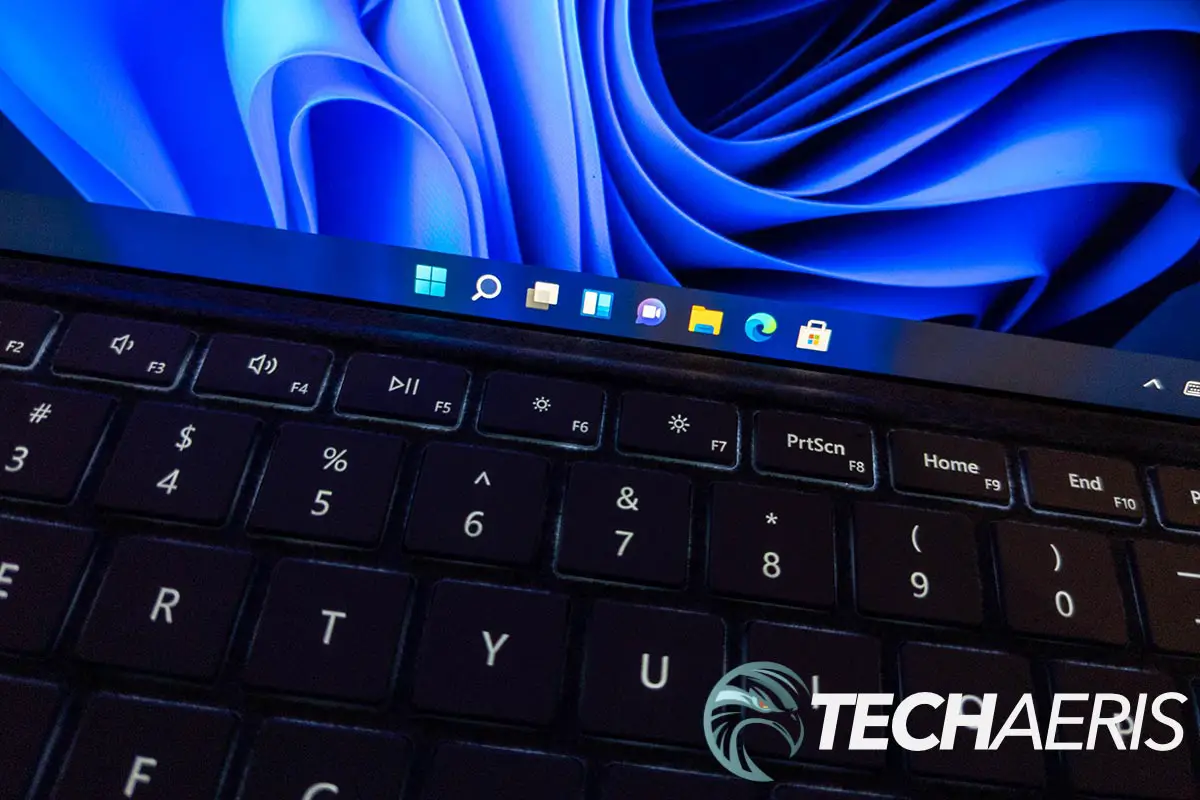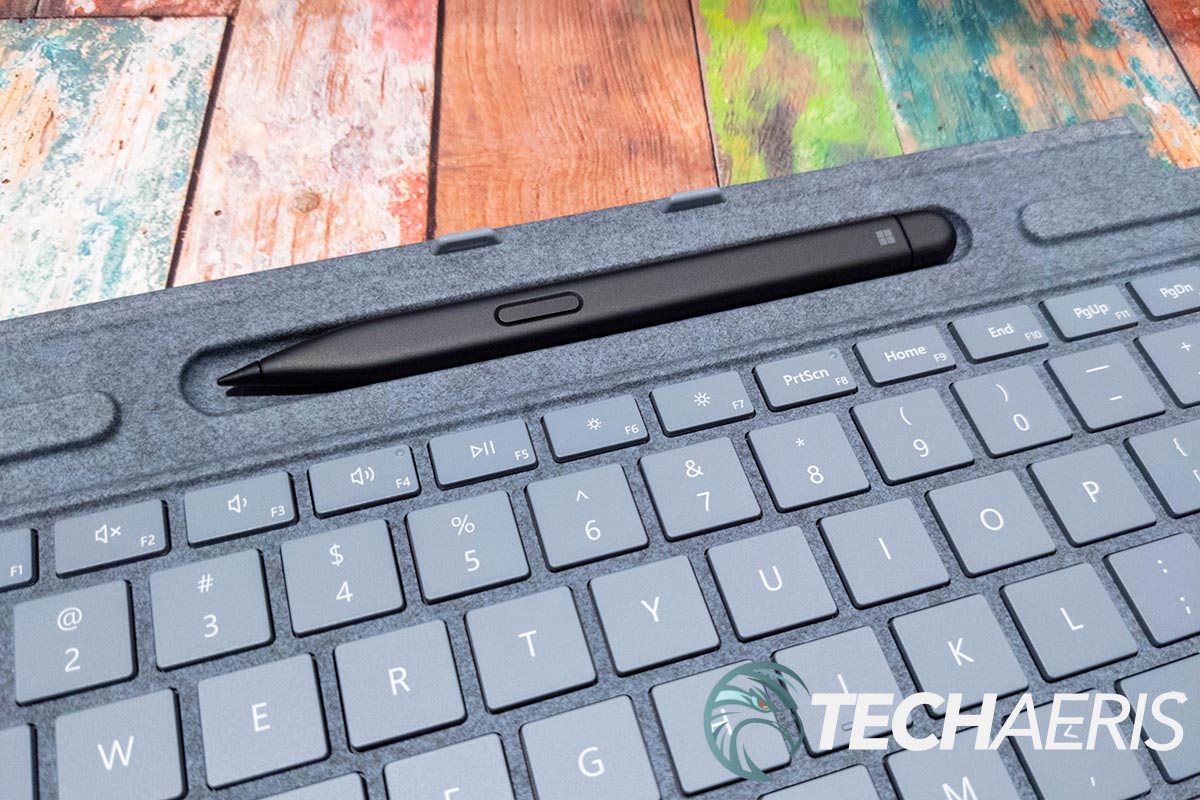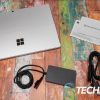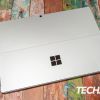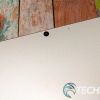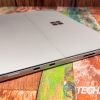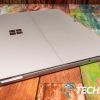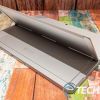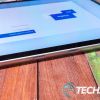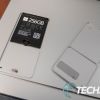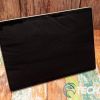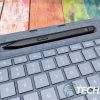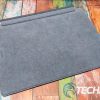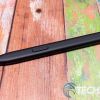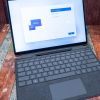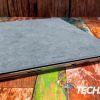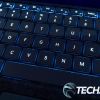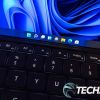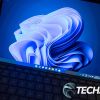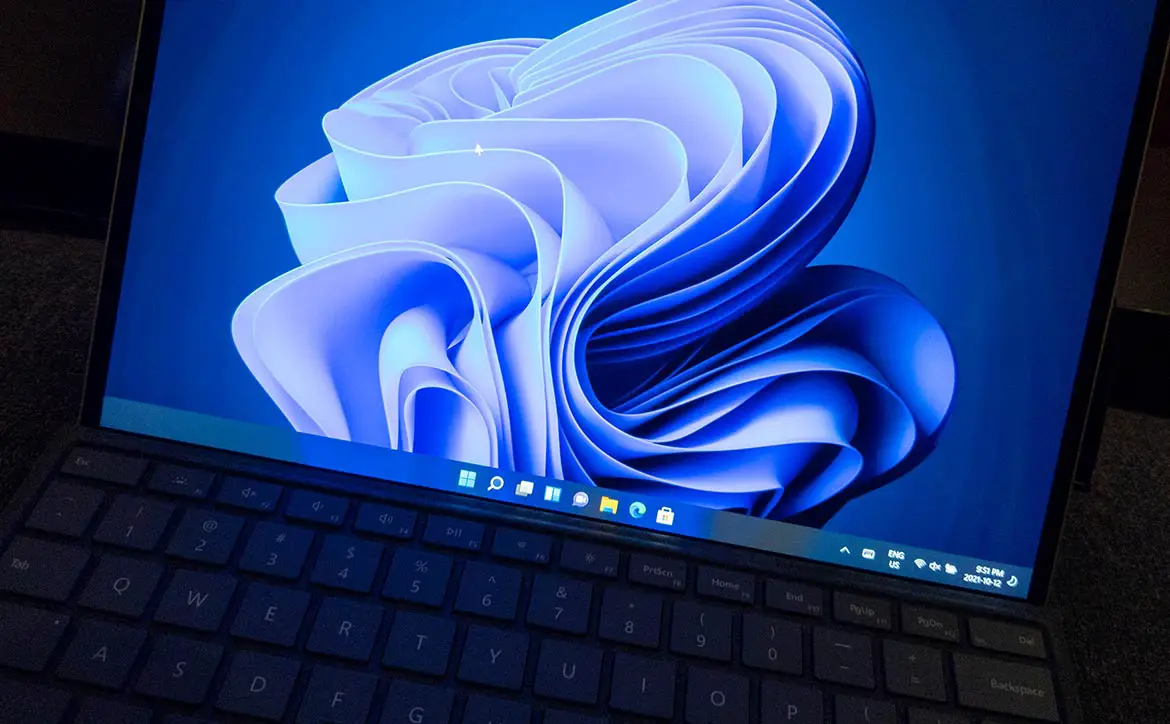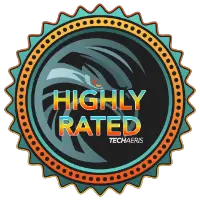
To be honest, I’ve never really seen the appeal of Windows detachables like the Microsoft Surface. More accurately, I’ve never been sold on the Windows tablet idea. Laptops have become thinner, and many have a 2-in-1 (which is really a 4-in-1) form factor, and I rarely use those in tablet mode. That said, I’ve had the opportunity to review a few detachables in the past bit, and I have to say, they are growing on me.
Estimated reading time: 17 minutes
Microsoft was kind enough to send a Surface Pro 8 our way, and our review takes a look at one of the latest Windows 11 detachables from the company, one that is slim, powerful, and ultra-portable. Read on to see how it may have just changed my mind about Windows tablet/detachables.
Table of contents
Specifications
The Microsoft Surface 8 Pro we reviewed has the following features and specifications (configurable when ordering):
| Processor | • Quad-core 11th Gen Intel® Core™ i7-1185G7 Processor • Quad-core 11th Gen Intel® Core™ i5-1135G7 Processor • i5 and i7 options with storage 256GB and above built on the Intel® Evo™ platform |
| Display | • Screen: 13″ PixelSense™ Flow Display • Resolution: 2880 x 1920 (267 PPI) • Up to 120Hz refresh rate (60Hz default) • Aspect ratio: 3:2 • Touch: 10 point multi-touch • GPU Ink Acceleration • Dolby Vision® support |
| Graphics | Intel® Iris® Xe Graphics (i5, i7) |
| Memory | 16GB (LPDDR4x RAM) (8GB, 32GB available) |
| Storage | Removable solid-state drive (SSD): 256GB (128GB, 512GB, 1TB available) |
| Sensors | • Accelerometer • Gyroscope • Magnetometer • Ambient Color Sensor (brightness and color) |
| Security | • Firmware TPM chip for enterprise-grade security and BitLocker support • Enterprise-grade protection with Windows Hello face sign-in |
| Connections | • 2x USB-C® with USB 4.0/Thunderbolt™ 4 • 3.5mm headphone jack • 1x Surface Connect port • Surface Type Cover port • Compatible with Surface Dial off-screen interaction |
| Cameras, video, and audio | • Windows Hello face authentication camera (front-facing) • 5.0MP front-facing camera with 1080p full HD video • 10.0MP rear-facing autofocus camera with 1080p HD and 4k video • Dual far-field Studio Mics • 2W stereo speakers with Dolby Atmos® |
| Wireless | • Wi-Fi 6: 802.11ax compatible • Bluetooth Wireless 5.1 technology |
| Buttons | Volume, Power |
| Battery life | Up to 16 hours of typical device usage |
| Pen Compatibility | • Surface Pro 8 supports Microsoft Pen Protocol (MPP) • Surface Pro 8 supports Tactile signals with Surface Slim Pen 2 |
| Keyboard Compatibility | • Surface Pro Signature Keyboard • Surface Pro X Keyboard |
| Software | • Windows 11 Home • Preloaded Microsoft 365 Apps • Microsoft 365 Family 30-day trial • Preloaded Xbox app • Xbox Game Pass Ultimate one month trial |
| Materials | Signature anodized aluminum |
| Colours | Graphite, Platinum |
| Battery capacities | • Battery Capacity Nominal (WH) 51.5Wh • Battery Capacity Min (WH) 50.2Wh |
| Dimensions | 287 x 208 x 9.3mm (11.3 x 8.2 x 0.37 in) |
| Weight | 891 g (1.96lb) |
What’s in the box
- Surface Pro 8
- 65W Power Supply
- Quick Start Guide
- Safety and warranty documents
- 1-year limited hardware waranty
Design
The Microsoft Surface Pro 8 is a tablet form factor at its core. In this case, the outer shell is crafted from signature anodized aluminum, and it has a nice weight, look, and build quality. It is 11.3″ wide, 8.2″ inches in height, and 0.37″ inches thick. As far as weight is concerned, that’s where the build quality comes in, with the Surface Pro 8 weighing just under 2 lbs. It’s not the lightest, but it doesn’t feel overly heavy either when held for extended sessions.
The edges are rounded and tapered slightly towards the back of the tablet. The 3.5mm audio jack and a volume rocker are on the left side towards the top. The right side (from top to bottom) is where you’ll find the power button, two USB-C Thunderbolt 4 ports, and the proprietary Surface Connect port for charging. On both sides, towards the bottom, is a notch — more on that in a moment. The top half of each side has a recessed vent for airflow and the two 2W speakers. This vent continues around across the top of the tablet, which also has a flat, grey plastic piece across it. Finally, on the bottom of the tablet is a Surface Type Cover port which consists of two small indents, one with connectors in it.
As far as the back of the Surface Pro 8 is concerned, just under half of the back acts as a kickstand — hence the notches on the side. These notches allow you to pull the kickstand out for use easily. The kickstand is attached with two small hinges, one on either side of the tablet. Centred on the kickstand is the four square Windows logo in silver. The Microsoft logo, the serial number, and a small rectangular cover with a pinhole sit underneath the kickstand. Using a sim key, push pin, or paperclip in the pinhole pops open the cover for easy access to the internal SSD drive, making it easy to upgrade at a later date. Finally, centred on the top of the Surface Pro 8 is the rear-facing 10MP camera.
The tablet’s front is pretty standard, with black bezels on the top, sides, and bottom. The top and bottom bezels are about 7/16ths of an inch in height, while the side bezels are narrower at about 3/16ths of an inch. The top bezel is thicker to accommodate the front-facing 5MP camera, Windows Hello camera, and a pair of microphones. The bottom bar is wider to accommodate the Surface Pro Signature Keyboard.
As far as the design of the Surface Pro 8 is concerned, as mentioned above, it has a pretty solid feel and has an excellent premium build quality. But wait! The keyboard? Yes, there is a keyboard for the Surface Pro 8, but it is a separate accessory, so we’ll discuss that towards the end of the review. You can always connect a Bluetooth keyboard or a USB-C hub and add a keyboard and mouse that way. The more I think about it, it is a nice option as many people prefer using a regular keyboard with laptops and with the Surface Pro 8, you can prop up the display and not have to worry about fighting for space with a permanently attached keyboard.
The charging cable is proprietary as well. The charging end is a slim cylinder with a short nub that sticks out. This nub inserts into the side of the Surface Pro 8 and is held magnetically. While it is slim, depending on how you orient it (it can be used up or down), sometimes it felt like it was in the way. On that note, the cable is slim and ends in a rather small (by power brick standards) 65W power brick. From there, a flat extension cable with a figure-8 connector on one end and a standard two-prong plug on the other rounds out the charging cable.
Our review unit came in the platinum (silver) colour, but you can also get it in graphite (black) if that’s more your style.
Display
The Microsoft Surface Pro 8 features a 13″ PixelSense Flow Display with a 2880 x 1920 resolution in a 3:2 aspect ratio. As I’ve mentioned in past reviews, I’m becoming more of a fan of this aspect ratio as I like having the extra height. In addition to Dolby Vision support, the display also has a 120Hz refresh rate option for smoother graphics, especially while gaming. For better battery life, you can stick with the default 60Hz if you wish.
Of course, with a 2880 x 1920 resolution, I had the Windows scaling set to 200% in order to read the text on the screen without having to squint. On that note, text is crisp, legible, and easy to read. The colours are decent, and the display resolution was great for everything from web browsing to photo editing and even gaming.
Being a tablet, the Surface Pro 8 display also features 10-point multi-touch. When used as a touch display, I had no issues with responsiveness, and the device responded as I would expect.
Software
The Surface Pro 8 does come with some pre-loaded software, but not much. As expected from a Microsoft product, the software includes Microsoft 365 apps, a Microsoft 365 Family 30-day trial, the Xbox app, and a one-month Xbox Game Pass Ultimate trial.
This is usually the part where I say that the system runs Windows 10 Home/Pro, and it runs great on the system. However, in this case, the Surface Pro 8 ships with the newly released Windows 11 (Home, in this case). Windows 11 is a review on its own, but I will say that I really like the look and some of the changes Microsoft made to their OS. Everything looks more modern with rounded corners for starters, and the centred Start menu is more intuitive and feels more productive. As an aside, if you use a widescreen monitor, the centred Start menu on the taskbar is a godsend as you’ll be doing much less moving with your mouse to access it as it is in a more centralized location.
Setting up a new system with Windows 11 is a little bit different, but more friendly I thought, than Windows 10. I’ve used Windows 11 before but it’s been through a Windows 10 to 11 upgrade, never an install or setup from scratch. Once you’ve entered your country and signed in with a Microsoft account, you are given the option to restore your settings, preferences, OneDrive, and select apps from a previous device. Next, you’re prompted to select how you plan on using the Surface Pro 8. You can select any or all of the Entertainment, Gaming, School, and Creativity options. Depending on what you select, you will get personalized tips and recommendations from Microsoft. Don’t worry, you can always change this later in the settings. Once you’ve done that, Windows 11 will finish installing and setting you up.
Here’s the brief overview of some of the new features of Windows 11, all of which work great on the Surface Pro 8:
- Centered Start menu
- New snap and desktop enhancements with snap groups
- Smart docking/undocking with external monitors
- Chat with Microsoft Teams
- Redesigned Microsoft Store
- Widgets for photos, meeting reminders, to-do lists, news, weather, and more
- Auto HDR
- DirectX 12 Ultimate with DirectStorage for faster game loading
- Xbox Game Pass
- Redesigned Photos app
- Updated Snipping Tool
- New Clock app with Focus Sessions
Of course, that is just a brief overview of some of the many new features of Windows 11. You can see Windows 11 in action on the Microsoft Windows YouTube channel, but here’s a quick overview to get you started:
Performance
While our review unit wasn’t the top of the line configuration, it wasn’t the bottom either. Equipped with a Quad-core 11th Gen Intel® Core™ i7-1185G7 Processor, 16GB of RAM, and a 256GB SSD, about all you could add is 16 more GB of RAM and a 1TB SSD instead of 256GB. As a result, the Surface Pro 8 handled everything I threw at it with relative ease. This included web browsing, document editing, photo editing with Adobe Photoshop and Lightroom, and even some gaming through Game Pass.
While I didn’t download and install games to the Surface itself, given it only has Intel® Iris® Xe Graphics on board, using the Xbox app and cloud gaming to stream games worked like a charm. If you’re on a good Wi-Fi network (and the Surface has Wi-Fi 6 support), you can play games like the newly released Forza Horizon 5 when paired with a wireless Bluetooth controller. This was one of my favourite uses for the Surface Pro 8 when the kids were using the Xbox, allowing me to play on a bigger screen with its built-in kickstand.
The only real issue I encountered was with Windows Hello. While it works o.k. for the most part to log in to Windows using facial recognition, it did struggle a bit in lower light conditions.
Sound Quality
The Surface Pro 8 has dual 2W speakers with Dolby Atmos support. As mentioned above, they are side-firing as they are located towards the back on the upper left and right sides of the Surface. This is great when using the device in landscape mode, but when in portrait mode, that then places the speakers on the right side and at the top and bottom. It didn’t make a huge difference, but I did notice it when rotating the device around.
The speakers do get pretty loud; unfortunately, they also start to distort very slightly. It’s not a lot, but I occasionally noticed it with certain songs and videos. There is also a pretty big lack of bass, which is to be expected from detachables and laptops. That being said, they do work well enough when you don’t have an external speaker or headphones nearby.
Camera
While most Windows devices have a front-facing camera, the Surface Pro 8 has a rear-facing camera as well. The front-facing 5MP camera has 1080p full HD video capabilities, making it great for video calls. We’ve mentioned this several times, and it’s nice to see an FHD camera instead of the typical 720p HD camera. However, there isn’t a flash or light of any kind, so it does struggle a bit in low light conditions.
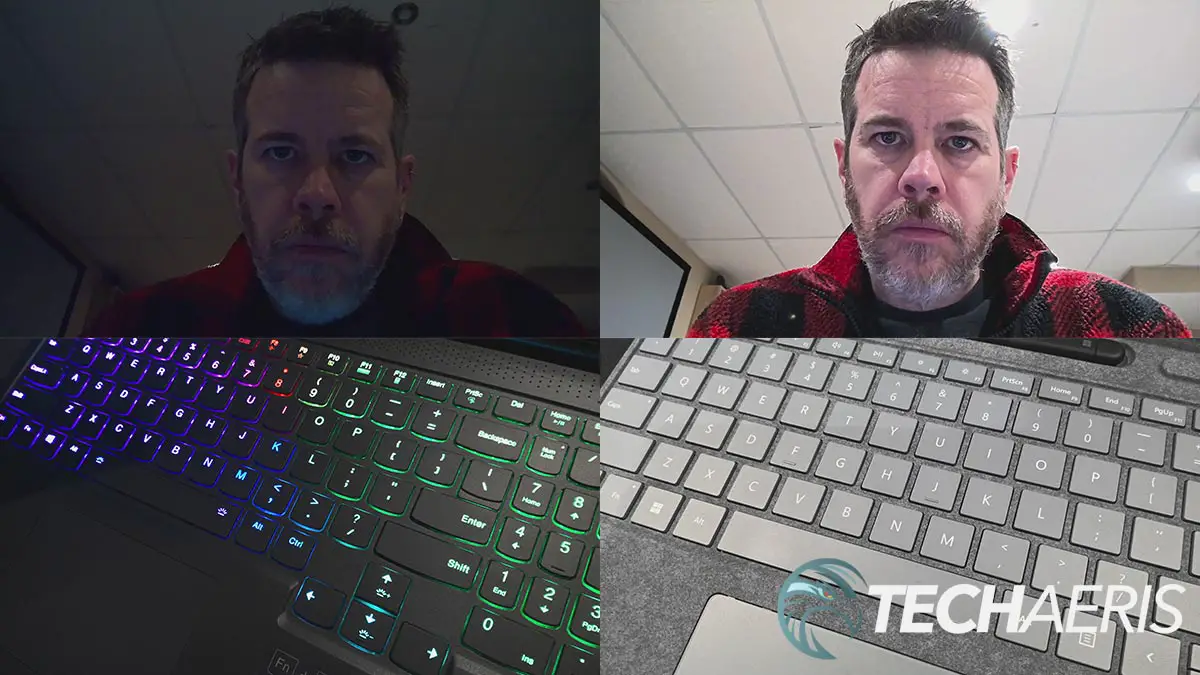
Microsoft has also placed a 10.0MP rear-facing camera with 1080p and 4K video capabilities on the back. Again, there is no flash or light, so your best bet is well-lit situations, both indoors and out, for taking pictures with it. Then again, taking photos with a 13″ tablet is a bit unwieldy, and your smartphone is likely to do a better job.
Battery Life
Microsoft states that you can get up to 16 hours of battery life, based on typical Surface device usage. This is based on the Intel 11th Gen Core i5-1135G7, 256GB, 8GB RAM configuration. Our review unit had the higher-powered i7-1185G7, which reduces battery life a bit. At any rate, while using the Surface Pro8 on the recommended power settings, I was able to get about 13 hours of use out of it before needing to plug it in. Tasks during these tests consisted of document editing, minor photo editing with Photoshop, and some music and video streaming. When used on the best performance mode, this dropped to just over 8 hours but was worth the sacrifice for those power-hungry apps like Photoshop.
Even though the Surface Pro 8 has a proprietary charger, you can charge it with a USB-C adapter via either USB-C Thunderbolt 4 ports, provided it’s at least 65W. Interestingly enough, the device will indicate that it is plugged in but doesn’t say it’s charging. However, I tested both USB-C ports with a 65W charger, and after a few minutes, the remaining battery life increased, indicating it was indeed charging.
Accessories
As mentioned above, the Surface Pro 8 is basically a Windows tablet. Thankfully, there are a few available accessories. One is almost a must-have; the other is a nice one to have.
Surface Pro Signature Keyboard
The Surface Pro Signature Keyboard is slightly larger than the Surface Pro 8. The keyboard is 11.38″ wide, 8.9″ deep, and a mere 0.19″ thick. The entire back and most of the front (keyboard side) is covered in a lovely soft Alcantara finish. The Microsoft logo is stamped along the middle of one of the short edges on the back.
The top of the keyboard has two pins which are how it attaches to the Surface Pro 8. The top portion also folds over and acts as a hinge. Between the two magnetic bumps, which attach magnetically to the bottom of the Surface, is a tray for the Surface Slim Pen 2. When placed in the tray, the pen rechargers itself. With the pen in place, or empty, the top portion folds up and over, attaching to the bottom of the front of the display on the Surface. This allows the keyboard to sit at a slight angle, enabling a better and more ergonomic typing experience.
The keyboard portion itself consists of five full-sized key rows. The keys themselves are slim mechanical keys. At first, it felt a bit odd typing on the keyboard, but after a bit, I rather enjoyed the typing experience. The four arrow keys take up the space of three keys in the bottom row, with the up and down keys being half height. A sixth row along the top is also half-height and consists of your Fn/shortcut keys for various functions.
I usually average between 100 and 105 wpm on most keyboards, which I easily hit with the Surface Pro Signature Keyboard. I hit over 115 wpm a few times, which is pretty rare for me. The glass touchpad is a nice size, measuring 4″ wide by 2 1/4″ in height. It is smooth to use, responsive, and as much as I dislike touchpads, I was able to guide the mouse cursor around on the Surface Pro 8 with no issues.
While the Surface Pro Signature Keyboard is decent enough for typing, the thinness does offer up some give, especially when using keys towards the edges. You can use it flat if you wish, but I found that it wasn’t very comfortable and it doesn’t lay flat. It’s not a huge concern, but it was something that I noticed while I used it. Another minor complaint that I noticed is that when the keyboard is attached to the bottom of the display, it slightly blocks the taskbar depending on the angle you have the Surface kickstand at. Again, it was not a significant issue but something I noticed when using it in a fairly upright position.
The Surface Pro Signature Keyboard is likely the accessory you’ll want to pick up for your Surface Pro 8. Even if you plan on using an external keyboard, the fact this doubles as a cover for when you are transporting your Surface Pro 8 and gives you a keyboard on the go makes it worth the US$179.99/CA$229.99 asking price. Our review unit came with the Ice Blue keyboard, but a Poppy Red variation is also available.
Surface Slim Pen 2
A second accessory you may want to invest in is the Surface Slim Pen 2. Perfect for writing, sketching, and navigating, the pen itself offers up an adjustable tactile feel. In other words, you can adjust how much feedback you get while writing on the Surface Pro 8, with the potential of making it feel like you are using the pen on actual paper. At first, it seemed like an odd feature, but the subtle feedback actually enhanced my user experience with the pen.
The pen itself is 5.38″ in length, 0.44″ in width, and 0.25″ thick. It weighs just under 1/2 an ounce (13 grams) and is nice and light, and comfortable to hold. Matte black in colour, it has a side button and a top button with an eraser feature. The rechargeable Lithium-Ion battery provides up to 15 hours of typical usage, and the pen itself recharges when placed in the tray on the Surface Pro Signature Keyboard — which also safely and securely stores it when not in use.
Priced at US$129.99/CA$169.99, I do feel like the Surface Slim Pen 2 is a niche product. Creatives and artists should love it with its 4,096 pressure levels and long battery life, and it does work well during my limited use with it.
Price/Value
The Microsoft Surface Pro 8 starts at US$1099.99/CA$1399.99 and goes up to US$2,599.99/CA$3,279.99. You’ll also likely be adding in the keyboard, which reduces the price slightly when added at the time of purchase. Still, you’ll need to tack on another US$139.99/CA$189.99 to the price.
Our review unit, as configured, costs US$1,599.99/CA$2,039.99. Even with the keyboard added on to that price, given the specs, performance, and versatility of the Surface Pro 8, it is a pretty reasonable price and offers decent value. The only thing I might change about this configuration if I purchased one for myself would be increasing the SSD to 512GB. While extra RAM would be nice, it is only available in the most expensive configuration with a 1TB SSD, and I don’t think that’s worth an extra US$700/CA$900. Then again, if you’re planning on using this for the next few years, it may not be a bad idea if you can afford it.
Photo Gallery
Wrap-up
If I was warming up to Windows detachable before, the Microsoft Surface Pro 8 has me sold. With the right specifications, not only is the Surface Pro 8 slim, versatile, and ultra-portable, but it is also just as powerful as a full-fledged laptop.
In some of our articles and especially in our reviews, you will find Amazon or other affiliate links. As Amazon Associates, we earn from qualifying purchases. Any other purchases you make through these links often result in a small amount being earned for the site and/or our writers. Techaeris often covers brand press releases. Doing this does not constitute an endorsement of any product or service by Techaeris. We provide the press release information for our audience to be informed and make their own decision on a purchase or not. Only our reviews are an endorsement or lack thereof. For more information, you can read our full disclaimer.

